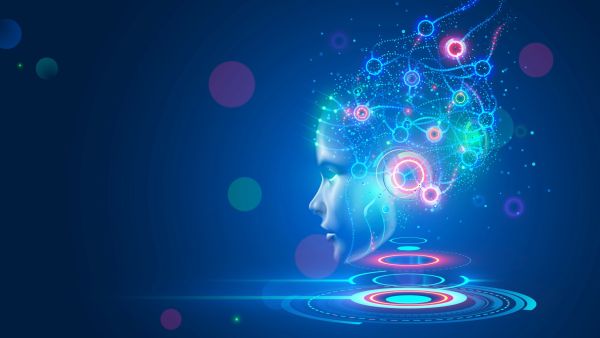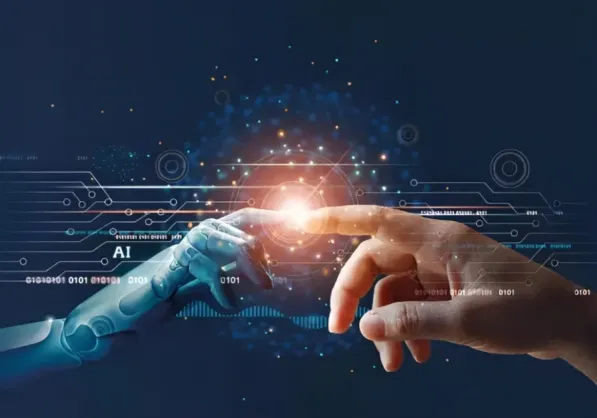Introduction
Artificial Intelligence (AI) has made remarkable strides in recent years, transforming industries, revolutionizing technology, and reshaping our daily lives. However, amid the excitement surrounding AI’s capabilities, there exists a fundamental challenge known as “knowledge collapse.”
This phenomenon arises from the dichotomy between narrow AI, which excels at specific tasks, and the elusive goal of achieving general intelligence. In this blog post, we explore the concept of knowledge collapse, its implications for AI development, and potential strategies for navigating this challenge.
Knowledge collapse refers to the limitations inherent in narrow AI systems, which excel at specific tasks but lack the broader understanding and adaptability of human intelligence. While narrow AI applications, such as image recognition, natural language processing, and recommendation systems, have demonstrated impressive capabilities within their respective domains, they often falter when faced with tasks outside their predefined scope. This reflects the inherent limitations of current AI approaches, which rely on vast amounts of labeled data and specialized algorithms to perform specific tasks but lack the flexibility and contextual understanding of human cognition.
How Artificial Intelligence Could Lead to ‘Knowledge Collapse'”
While artificial intelligence has the potential to process vast amounts of data, generate new insights, and unlock greater productivity, its widespread adoption may entail unforeseen consequences. We identify conditions under which AI, by reducing the cost of access to certain modes of knowledge, can paradoxically harm public understanding. While large language models are trained on vast amounts of diverse data, they naturally generate output towards the ‘center’ of the distribution. This is generally useful, but widespread reliance on recursive AI systems could lead to a process we define as “knowledge collapse”, and argue this could harm innovation and the richness of human understanding and culture.
However, unlike AI models that cannot choose what data they are trained on, humans may strategically seek out diverse forms of knowledge if they perceive them to be worthwhile. To investigate this, we provide a simple model in which a community of learners or innovators choose to use traditional methods or to rely on a discounted AI-assisted process and identify conditions under which knowledge collapse occurs. In our default model, a 20% discount on AI-generated content generates public beliefs 2.3 times further from the truth than when there is no discount. An empirical approach to measuring the distribution of LLM outputs is provided in theoretical terms and illustrated through a specific example comparing the diversity of outputs across different models and prompting styles. Finally, based on the results, we consider further research directions to counteract such outcomes.
Implications of Knowledge Collapse:
The problem of knowledge collapse has far-reaching implications for AI development, impacting areas such as automation, decision-making, and human-machine interaction. Some key implications include:
- Limited Transferability: Narrow AI systems are often designed to perform specific tasks in isolation, limiting their ability to transfer knowledge and skills across domains. For example, a machine learning model trained to recognize images of cats may struggle to identify other animals or objects unless explicitly trained on those categories. This lack of transferability hinders the scalability and versatility of AI systems, requiring significant resources and effort to develop specialized solutions for each task or domain.
- Contextual Blindness: Narrow AI systems operate within predefined contexts and lack the broader understanding of real-world situations that human intelligence provides. As a result, these systems may struggle to interpret ambiguous or unfamiliar inputs, leading to errors and misinterpretations. For example, a natural language processing model trained on news articles may struggle to understand colloquial language or cultural nuances present in social media posts. Contextual blindness limits the applicability of AI systems in complex and dynamic environments, where contextual understanding is essential for accurate decision-making.
- Brittle Performance: Narrow AI systems are susceptible to adversarial attacks and unforeseen circumstances that deviate from their training data distribution. Minor changes in input data or environmental conditions can lead to significant performance degradation or erroneous outputs. For example, an image recognition model trained on pristine photos may fail to recognize objects in low-light conditions or under occlusion. This brittleness poses challenges for deploying AI systems in real-world scenarios where robustness and reliability are paramount. We are witnessing a rapid advancement of AI and its impact across various industries.
However, with great power comes great responsibility, and one of the emerging challenges in the AI landscape is the potential for adversarial attacks that deliberate attempts to deceive or manipulate machine learning models by exploiting their vulnerabilities. These attacks exploit vulnerabilities in AI systems, threatening their integrity, reliability and security. In this article, we will delve into the potential adversarial attacks on AI systems, exploring the security challenges they pose and discussing solutions on how technology leaders can navigate this landscape and keep their models secure.

Strategies for Navigating Knowledge Collapse
While the problem of knowledge collapse presents significant challenges, researchers and practitioners are exploring various strategies to address this issue and advance AI towards general intelligence. Some key strategies include:
- Transfer Learning: Transfer learning involves leveraging knowledge gained from one task or domain to improve performance on another related task. By transferring features, representations, or even entire models learned from one domain to another, transfer learning enables AI systems to generalize across tasks and domains more effectively. For example, pre-trained language models like GPT (Generative Pre-trained Transformer) can be fine-tuned on specific tasks, such as sentiment analysis or question answering, with relatively little labeled data, demonstrating the potential of transfer learning to mitigate knowledge collapse.
- Multi-Task Learning: Multi-task learning aims to train AI systems to perform multiple tasks simultaneously, leveraging shared representations and learning mechanisms across tasks. By jointly optimizing multiple objectives, multi-task learning encourages AI systems to learn more generalizable features and representations that benefit performance on individual tasks. On the other hand, modern neural networks (and other machine learning algorithms) usually solve a single problem from a single example — it can be classification, regression, structured prediction, anomaly detection or even object generation, but usually, we expect a single thing at the end. For example, a multi-task learning framework could simultaneously train a model to perform image classification, object detection, and semantic segmentation, allowing the model to capture diverse aspects of visual understanding.
- Cognitive Architectures: Cognitive architectures aim to emulate the structure and functionality of human cognition, enabling AI systems to reason, learn, and adapt in a more human-like manner. By incorporating principles from cognitive psychology, neuroscience, and artificial intelligence, cognitive architectures seek to overcome the limitations of narrow AI approaches and move towards more flexible and adaptive forms of intelligence. Examples of cognitive architectures include ACT-R (Adaptive Control of Thought – Rational) and Soar, which model human cognition through symbolic reasoning, procedural learning, and working memory mechanisms.
- Hybrid Approaches: Hybrid approaches combine elements of narrow AI techniques with more generalizable and adaptive mechanisms to achieve robust and flexible intelligence. By integrating deep learning with symbolic reasoning, probabilistic inference, or reinforcement learning, hybrid approaches aim to combine the strengths of different AI paradigms while mitigating their respective weaknesses. For example, hybrid models such as Neuro-Symbolic AI combine neural networks with symbolic reasoning frameworks to enable more interpretable and compositional representations of knowledge. Hybrid AI, an innovative convergence of symbolic and non-symbolic AI, is emerging as a game-changing force in the realm of artificial intelligence. It combines the strengths of two distinct facets of AI, introducing a new wave of transformative solutions allowing real-time decision-making and enhanced creativity. This synergy creates user-friendly and authentic systems, promoting a seamless interaction between humans and their digital environments.
Integrating Symbolic and Non-Symbolic Approach for Enhanced Decision-Making
Symbolic AI, which uses logical rule-based systems to link facts and events, enables machine-readable and retrievable knowledge. This approach is vital in adding a layer of semantic understanding and enhancing decision-making processes. On the other hand, non-symbolic AI encompasses machine learning, deep learning, and neural networks, using vast amounts of training data to derive statistically informed conclusions and decisions.
The true power of AI lies not in these separate branches but in their integration – a hybrid approach, called hybrid AI. Hybrid AI represents a structured, comprehensive, and integrated application of both symbolic and non-symbolic AI. With the goal of making all data or knowledge within an organization machine-readable and understandable in natural language, hybrid AI effectively improves overall data comprehension, retrieval, and utilization.
From autonomous vehicles to retail industries, the applications of hybrid AI are diverse and far-reaching. The future of AI looks promising with the advent of hybrid AI, offering a flexible and responsive system set to transform how we interact with technology.

Conclusion
The problem of knowledge collapse represents a fundamental challenge in AI research and development, stemming from the limitations of narrow AI approaches in achieving general intelligence. While narrow AI systems excel at specific tasks within predefined domains, they often struggle to generalize across tasks, adapt to new environments, and understand complex contexts. Addressing knowledge collapse requires innovative strategies that bridge the gap between narrow AI and general intelligence, enabling AI systems to learn, reason, and adapt in a more human-like manner.
By embracing approaches such as transfer learning, multi-task learning, cognitive architectures, and hybrid models, researchers and practitioners can navigate the challenges of knowledge collapse and advance AI towards more flexible, robust, and adaptable forms of intelligence. While achieving general intelligence remains a daunting task, ongoing research efforts and interdisciplinary collaborations offer hope for overcoming the limitations of narrow AI and unlocking the full potential of artificial intelligence.
Related Posts





